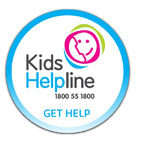Internet Safety: Parents
Location-based ServiceLocation-based services
Smartphones have a built-in feature called geolocators that can pinpoint the exact location of a mobile phone.
If enabled, this information can be used by location-based services to provide useful services including maps, apps and retail services. The information can also be published online through social networking sites, or embedded in images taken with a smartphone camera. While this information can be useful, it can also be misused.
What are the risks?
Security and safety—publicising a person’s physical location can be risky. If a user publicises that they are not at home, it could present a security risk for the home or a safety risk for their family.
Privacy ‘Checking in’ gives others online an understanding of a user’s personal and social patterns, for example places they frequent, likes and dislikes, or memberships. This can enable users to meet like-minded people, however it can also lead to unintended followers tracing user’s movements. The information provided can also be stored and searched indefinitely, meaning that information provided today may damage your digital reputation and be detrimental in the future.
Precautions when using location-based services
Location-based service users can protect themselves by minimising the amount of information they disclose and deciding when, how often and how much detail to provide when checking-in to social networking services. Ask the location-based service what privacy and security controls are available and which of the following measures can be applied to the service:
- Set appropriate settings—As with all online social networking, there is a private and public setting. As a default, with some location based services, everything the user does is accessible through a website to everyone who users the service. This information can be searched anonymously by anyone who accesses the website. However, the privacy settings can control who sees what. Under the ‘privacy’ setting, some location-based services have levels such as ‘hidden’—completely hiding your post, ‘city’—just showing the vicinity and ‘exact’—even with this setting you decide how much detail you provide.
- Edit account—users can edit account settings such as profile, password and privacy. It is a good idea to monitor and review settings and change passwords regularly.
- Block unwanted users or their posts—block a user by going into their user profile and blocking them via the settings button.
- Stop or delete the account—there are a number of ways to stop or delete an account. Location-based services allow users to do this directly from their profile by clicking on a link or by sending an email or a text directly to the service.
- Choose what notifications to receive—opt out of receiving some or all notifications (messages via SMS or email when other users ‘check-in’). The opt out option may be available under every ‘friend’ in a friends list.
- Report inappropriate activity—some location-based services have a facility which allows users to report inappropriate activity.
- Don’t share it—If unsure whether a post is too much information or if it may be going to a wider audience, don’t share it!
Where do I go for help?
Cybersmart Outreach internet safety awareness presentations
Cybersmart Outreach offers free Internet Safety Awareness presentations for parents, students and teachers. These sessions are informative, non-technical and available to all schools. Ask your child’s school if they have registered to host a parent presentation.





